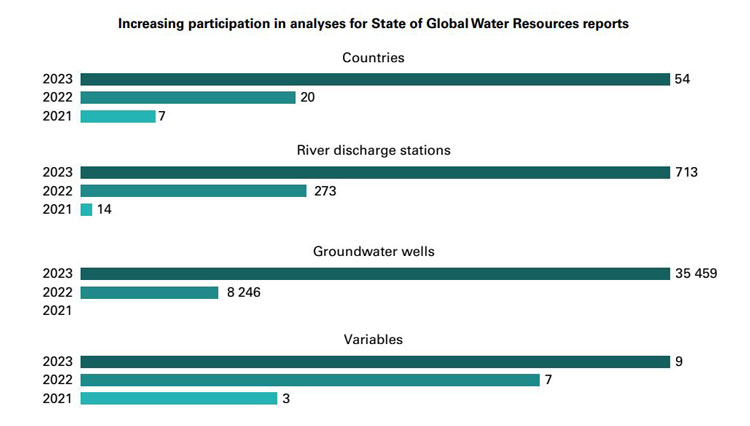
The year 2023 was the hottest year on record and the driest year for rivers in the last three decades. This is one of the key messages of the new State of Global Water Resources report 2023, which was published on Monday, 7 October 2024 by WMO. In its third edition, the report again gives a comprehensive overview on the status of the global hydrological cycle, which becomes more erratic due to climate change. The results show that river discharge and reservoir inflow suffer from five consecutive years of below-normal conditions. Glaciers experienced the largest mass loss in 50 years, with the second year of widespread ice loss globally in 2023. But in addition to droughts, there were also extensive flood events affecting communities, agriculture and ecosystems.

For the compilation of this year’s report, again a large amount of observed and modelled data from National Meteorological and Hydrological Services and other organizations and experts was used. This also includes data from GRDC, which was used to support the modelling of global discharge. The number of river discharge stations included in the report increased thereby significantly from 273 stations in 14 countries in 2022 to 713 stations in 33 countries in 2023.

For the first time, here also the Remote Sensing-based Extension of GRDC (RSEG) dataset was evaluated, which extends the GRDC time series using remote sensing data. This dataset has been developed by the Institute of Geodesy, University of Stuttgart, using GRDC data. It is intended to be included in future editions of the report.
Further information and the full report are available at the website of WMO.
Back to top